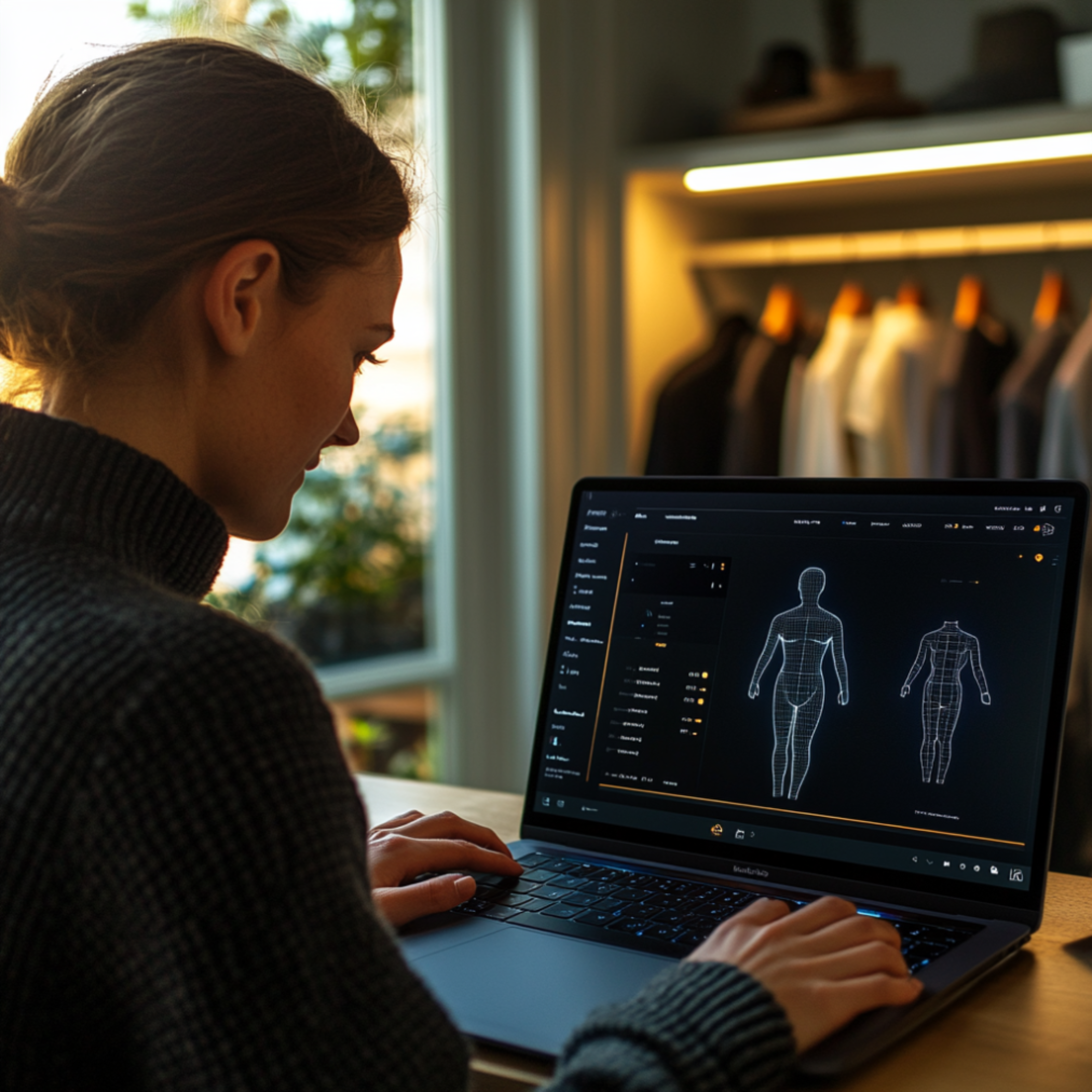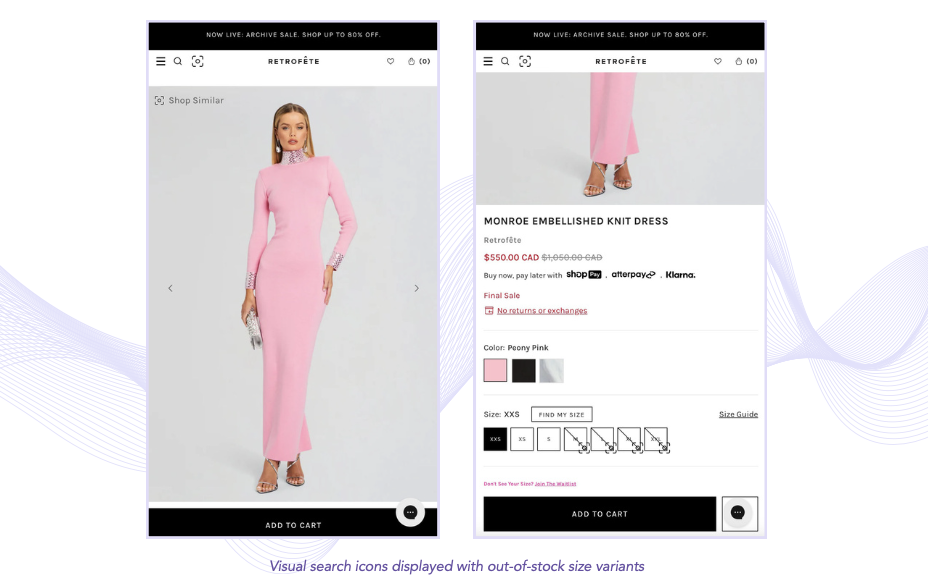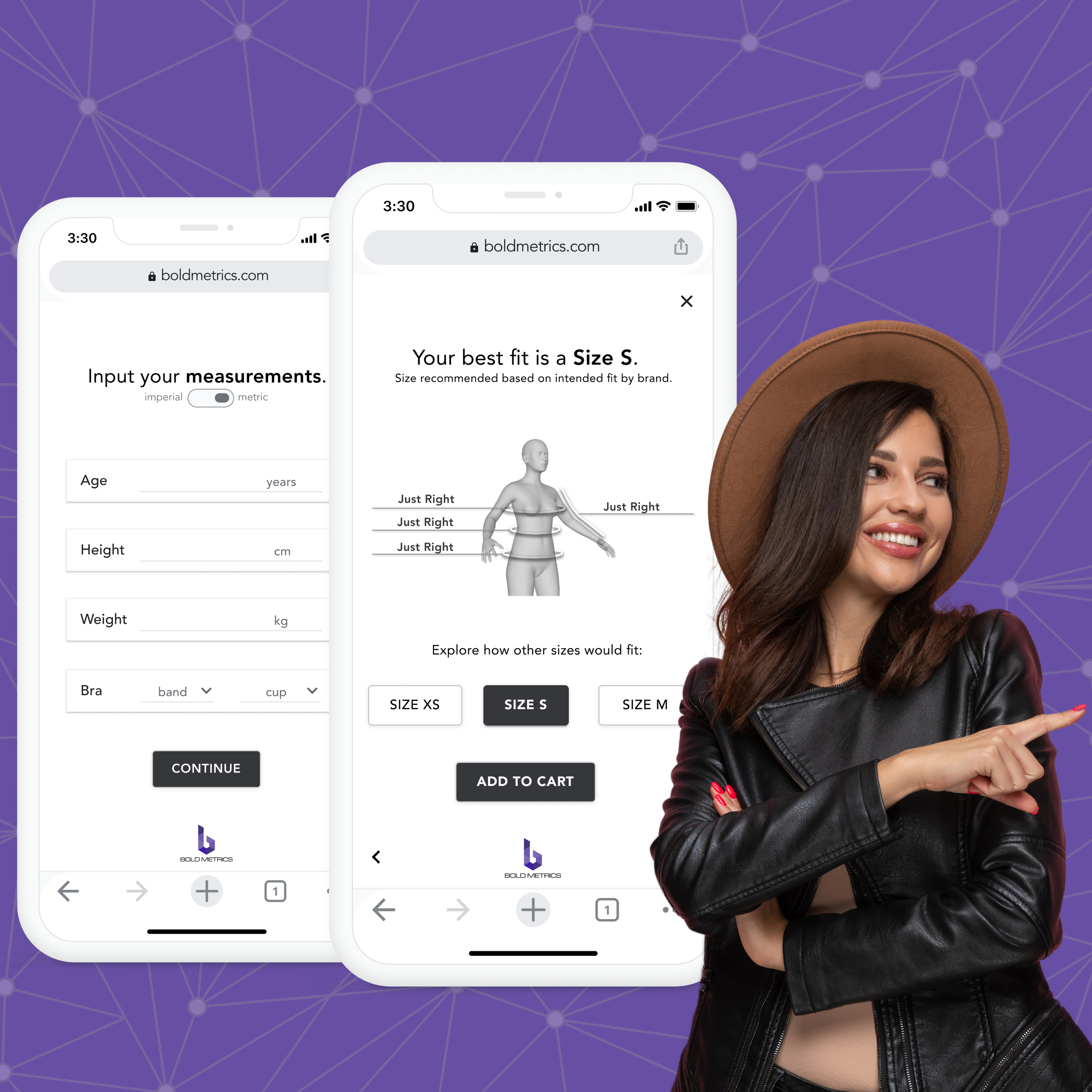
Why Body Data Accuracy is Crucial for Apparel Retailers
Accurate body data is the linchpin of the apparel industry's ability to provide correct sizing solutions, optimize design processes, and reduce costly returns. When data is inaccurate, retailers risk not only frustrating customers but also wasting resources, increasing returns, and damaging customer lifetime value (CLV).
Understanding Body Data and Its Importance
Body data refers to the detailed measurements and insights collected from an individual’s physical dimensions. Traditionally, apparel brands and retailers have had limited access to accurate body data, relying instead on generalized sizing models and/or population studies. Bold Metrics' technology changes the game by providing access to over 50 body measurements, such as inseam, shoulder width, and chest circumference, all derived without the need for a physical measuring tape. By capturing nuanced variations in body shapes, our technology offers a more tailored and accurate fit for shoppers. These insights are critical as they bridge the gap between standard sizing and individual needs, allowing retailers to create more personalized sizing solutions and enhancing overall customer satisfaction.
The Problem of Inaccurate Body Data
The impact of inaccurate body data is vast, particularly for apparel retailers who rely on this data to ensure proper fit and size recommendations. According to a study by McKinsey & Company, up to 70% of returns in fashion e-commerce are size-related. This staggering number underscores the importance of accurate sizing solutions.
Furthermore, inaccurate body data can lead to issues like bracketing, where customers purchase multiple sizes with the intention of returning those that do not fit. This not only affects the retailer’s profit margins but also has a direct impact on sustainability goals by increasing carbon footprints and unnecessary logistics costs.
A well-documented example of this is how sizing widgets, comparison charts, and basic body scanners that rely on outdated or generalized fit models often fail to capture individual body nuances accurately. These basic tools do not take into account the variety in body shapes and variations in proportions, leading to poor recommendations and higher return rates.
The Cost of Bad Data
Inaccurate data increases conversion friction and drives up return rates—two major challenges for retailers aiming to reduce customer churn and improve profitability. For instance, one report highlights that 63% of shoppers bracket when unsure about sizing, leading to automatic returns for items that don’t fit. Additionally, 65% of apparel returns are due to fit issues, which is the highest reason across industries.
Here’s a breakdown of the costs of bad sizing data:
- Lost conversions: Shopper hesitation when it comes to fit drives low conversions. This impact is more significant for new shoppers who are not yet confident in sizing consistency.
- Bracketing: As mentioned, the practice of buying multiple sizes leads to more returns and lower overall profitability.
- Negative impacts on CLV: Retailers lose returning customers when the fit is wrong on the first try. A recent survey showed that first-time buyers who receive incorrect sizes are less likely to come back.
Best-Fit Solutions: Harnessing Accurate Body Data
The solution to these challenges lies in more advanced data capturing methods and AI-driven body models, which can address the disconnect between product design and actual customers. When retailers rely on accurate body data models, they can:
- Improve customer satisfaction by ensuring that fit recommendations are precise, leading to fewer returns.
- Enhance sustainability efforts by cutting down unnecessary returns and optimizing shipping practices.
For more insights on choosing the best sizing technology and minimizing return rates, download our Buyer’s Guide: How to Choose the Best Sizing Technology for Apparel.
Sources:
- Fashion and Textiles. (2023). The Development of Dress Forms in Standing and Sitting Postures Using 3D Body Scanning and Printing. https://fashionandtextiles.springeropen.com/articles/10.1186/s40691-020-00212-3
- MDPI. (2023). Research on the Accuracy of Clothing Simulation Development: The Influence of Human Body Part Characteristics on Virtual Indicators. https://www.mdpi.com/2076-3417/12/21/11053


.png?width=600&height=408&name=march%202023%20-%20french%20toast%20(1).png)

.png?width=1080&height=1080&name=Bold%20Metrics%E2%80%99%20digital%20twin%20technology%20helps%20some%20of%20the%20worlds%20biggest%20bands%20increase%20conversion%20and%20AOV%2c%20reduce%20returns%2c%20optimize%20their%20customer%20experience%2c%20and%20boost%20brand%20loyalty.%20(2).png)














